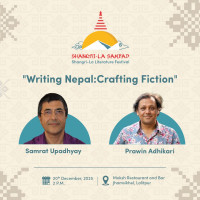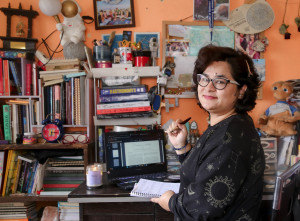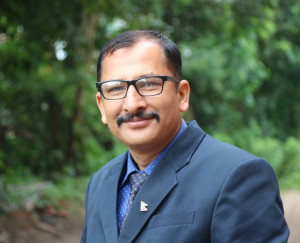Culture & Lifestyle
Many colours of Holi
How do the seven provinces of Nepal celebrate the festival?
Rukusha Giri
According to Bhagwat Mahapuran, Holi celebrates the triumph of good over evil. It marks the day the demon princess Holika, sister of Hiranyakashipu, was killed in the fire while trying to burn her nephew, Prahlad.
The festival is celebrated all over Nepal in different ways. The Post brings you the many ways the festival of colours is celebrated in all seven provinces of Nepal.
Janakpur, Madhesh Province
Tarai region is famous for its grand Holi celebrations. Janakpur is a great example of how big the celebration of the festival of colours can get.
Holi celebration in the Madesh Province starts a fortnight before the actual festival day. The city’s inhabitants participate in a Parikrama (circumambulation of temples) where they visit one temple every day for 15 days—starting and ending with Janaki Mandir.
“Holi is a big deal in Janakpur because it marks the end of the winter season and the beginning of spring,” says Aayush Goyenka, a 19-year-old student from Janakpur. At the Janaki Temple grounds, farmers play with mud instead of colours to signify this change of seasons.
Biratnagar, Koshi Province
Biratnagar celebrates Holi in a spirit of socialisation. The Tarai region of the province is highly influenced by the celebration of the festival in India.
Dilli Prasai, an associate professor at Tribhuvan University and a Biratnagar native, says that while the festival was only celebrated by people living in Tarai until a couple of years ago, now, people across all regions seem to celebrate Holi.
According to Prasai, the culture of Holika Dahan (collecting wood and burning them as a symbol of burning Holika) is slowly disappearing in Biratnagar, and only some families who are very invested in Holi follow this ritual. The families that participate in Holika Dahan also perform a puja (an act of worship) near the fire, put on a tika of the ashes on the forehead and eat prasad (devotional offering).
“The next day (the day after Fagu Purnima), everyone gathers as usual to celebrate Holi,” says Prasai adding that water balloons are banned in the province, so people can only play with colours during the festival.
Sindhupalchok, Bagmati Province
Sindhupalchok’s Holi typically begins a day before the Tarai holi. On the day before Purnima, people gather and assemble a bonfire. Since the district is home to a sizable Buddhist population, villagers traditionally would not participate in the Hindu festival of colours. However, with the advent of social media, youths in Sindhupalchok have also begun celebrating Holi in recent years.
"The villagers in Sindhupalchok do not celebrate Holi the same way that people in other parts of the country do," says Devendra Bhandari, a well-known Dhami (faith healer) in the district.
Bhandari described his experiences gathering several plants, including Jatamasi (spikenard) and 'Kumkum Dhoop,' to burn on the Holika Dahan bonfire.
The major areas of Sindhupalchok, such as Bahrabise, Melamchi, and Chautara Sangachowk, have a Hindu population and celebrate Holi. They begin their celebration with a bonfire the day before, and the next day they all assemble in groups to celebrate the holiday with colours and water balloons.
Syangja, Gandaki Province
The elderly villagers of Gandaki celebrate Holi customarily by singing and dancing together, whilst the youth celebrate by playing with colours. Holi in Syangja is not the same as holi in the Tarai area.
"Holi used to be more localised in our neighbourhood, and I still love that vibe. But still, with all of these social networks, the younger generation is playing holi in new and interesting ways,” says Dilip Pratap Khand, former mayor of the Waling Municipality in Syangja.
"The way I remember playing holi has completely changed. We used to put a simple tika back in our days. Today chemical-based colours are smeared on youth’s faces. They also roam from one location to another in trucks, splashing water on one another. I find it problematic,” says Khand.
Rupandehi, Lumbini Province
Holi in Lumbini begins the day after Shivaratri. The area’s youth gather sammat, a collection of wood, dry plants and herbs, over these two weeks and burn these in a communal fire during Fagu Purnima to signify Holika Dahan.
"We stay up all night before the fire to welcome Holi," says Khushi Ram Chaudhary, a board member of Tharu Kalyankari Sabha. Lumbini natives begin their Holi by taking home ashes from the Dahan and putting on its tika in the morning.
"Lumbini has a large Tharu population. On Holi, members of the Tharu community sing and perform ‘JhiJhiya’ dance. We visit each other’s houses to perform and get bheli (jaggery), chamal (rice) and dakshina (monetary offering),” explains Chaudhary, adding that a participant of this ritual later organises a lunch for the whole team with this money.
Surkhet, Karnali Province
Since Karnali has a mixed population from the Tarai and Hilly regions, the province’s Holi celebration is also an amalgam of these regions. The celebration is pretty mild in the hills compared to the Tarai. Individuals from the Tarai, like those from the highlands, bring their unique flavours.
"Youths nowadays celebrate their own kind of Holi," says Tilak Poudel, an advertiser on TV Today Channel, adding that locals come together and organise local Holi events across various themes.
Everyone gets together to enjoy the festival in the city by playing with colours, water, and Deuda Khel (a cultural dance performed in Sudurpashchim).
"Surkhet is a meeting place of many cultures, so everyone has their own way of celebrating the festival of colours," says Poudel.
Achham, Sudurpashchim Province
Holi is known as 'Fagu Parba' in Achham.
People in Achham start preparing for Holi eight days before the actual holiday. Everyone comes together to celebrate Holi by playing games.
"We begin our Holi celebrations as soon as Shivaratri ends. We celebrate by singing and dancing Deuda Khel,” says Uday Ram Dhungana, a college administrator in Achham.
He further explains that Achham natives bring the Chir (a decorated pole) in an open space and worship it for eight days, until the day prior to Hol. They then light up the Chir as the symbolical victory of good over evil.
Achham natives also play a one-of-a-kind game called 'Fagu Holi Khel,' which is played from the day the Chir is set on the ground till Holi. The last day of this enigmatic festival of colours is celebrated by singing, dancing, and having a lot of fun with vibrant colours.
With inputs from district correspondents.




 7.12°C Kathmandu
7.12°C Kathmandu


.jpg&w=200&height=120)












